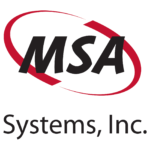 The supply chain is a network comprising manufacturers, distributors, retailers, customers, transporters, processes and application systems as well as mathematical models. This network is aimed at one purpose which entails ensuring products and services are delivered to final customers in their requested descriptions within desired time frames. However, companies must ensure their provision is optimized to use less capital and investment while reaping higher revenue without compromise on product or service quality. Supply chain optimization refers to the application of various processes and tools to streamline activities within a supply chain. Streamlining includes increasing efficiency and relationship, minimizing input, maximizing output and reducing effort spent in processes and delivery. There are many benefits of supply chain optimization although companies must first note a few things.
The supply chain is a network comprising manufacturers, distributors, retailers, customers, transporters, processes and application systems as well as mathematical models. This network is aimed at one purpose which entails ensuring products and services are delivered to final customers in their requested descriptions within desired time frames. However, companies must ensure their provision is optimized to use less capital and investment while reaping higher revenue without compromise on product or service quality. Supply chain optimization refers to the application of various processes and tools to streamline activities within a supply chain. Streamlining includes increasing efficiency and relationship, minimizing input, maximizing output and reducing effort spent in processes and delivery. There are many benefits of supply chain optimization although companies must first note a few things.
The Advantage of Optimization
The prime benefits of optimizing a supply are the same ones that underpin virtually all businesses. However, they are more specific to distribution and supplies. Typically, all managers and businesses aim at achieving ultimate efficiency at every level. The focus is on reducing inputs and resource use while maintaining and/or increasing outputs. Inputs consist of manufacturing and production costs, operating costs, costs of transportation, storage and delivery among others. Outputs are measured in terms of revenue income, reduced bills and improved sales figures. The precise advantages of optimization include the following;
• Optimal placement of inventory – To achieve efficiency in production, transportation and distribution, the inventory must be optimally placed within a supply chain. This ensures there is a continuous cycle of distribution allowing quick recording and reporting of trends. Optimal inventory placement also ensures the existing demand is constantly satisfied and new markets are in pursuit. There should be no excess of inventory since this signifies overproduction and lack of full optimization.
• Maximizing revenue – In order to optimize revenue, two main things need to be done either independently or combined. The sales should be increased and cost of production should be reduced. Maximizing revenue is all about spending less while yielding more. This is only possible when efficiency of high degree has been achieved. Supply chain optimization involves applying various mathematical models and processes to streamline events and operations. It also involves the use of advanced computer systems to monitor, track and report on processes implemented. To optimize revenue is the same as applying strategies and tools that will make the most out of used resources.
• Continuous tracking and upgrading – Optimization will engage the use of modern software and research on existing context. Since new technologies, methodologies and tools are bound to emerge, optimization results in constant maximization of revenue and use of resources. This promotes upgrading and continued progress. Without embracing emerging efficiencies, optimization can be difficult to achieve.
• Customer satisfaction – Customers are still the most important stakeholder for any business. Their satisfaction and reception of distributed products and services are prime metrics to watch out for. Optimization identifies and captures customer qualities, behavior, trends, patterns and feedback. Through optimizing the supply chain, customers are able to receive what they want when they want it and how they want it. These are the basic elements of customer satisfaction. Optimization allows the use of metric collection tools and software that can provide insight on what needs to be improved to enhance customer experience and consequent satisfaction.
• Reduced effort of production – Streamlining the supply chain operations during optimization helps in various ways. Optimization can lead to automation, faster communication and channeled information flow among other things. Processes become easier to accomplish and less effort is spent in doing some tasks thus creating times and manpower to focus on other aspects of the business. This in turn improves overall productivity of the warehouse or distribution channel.
• Improved networking – A typical supply chain thrives on accurate forecasting of future demand to shape inventory placements and production rates. To achieve this, all stakeholders need to give their inputs. Optimization is aimed at improving networking in the supply chain by facilitating task completion, communication and information sharing. When networking is improved and the experience enhanced, customer satisfaction becomes less daunting. Orders can be generated in ample time and all processes can be monitored at each stage to ensure the products and services will be ready within scheduled times.
There are many other minor advantages of supply chain optimization. With lowering costs of production and increasing satisfaction, businesses achieve sales rise and profit rise which are the two most sought results.
Comprehensive Optimization
To successfully optimize a supply chain, businesses cannot rely of software applications alone. In fact, not any formulated algorithm and application can fully replace individual business instincts and essence. For example, when there is only a capacity to serve one customer at the moment, advanced software may recognize customers with lower value and propose them to be focused later in preference of those with greater value. However, the customer with low value may be a new client who should be impressed and captured while the one with more value may be a seasoned loyal customer who allows more flexibility of timing and delivery. In this case, only human business essence can lead to the right decision. When optimizing, it is important to combine the use of processes, application, human business experience and advanced tools. This combination yields comprehensive optimization where all resources are utilized accordingly and available efficiencies are captured to maximize revenue while reducing production and operating costs. The advantage of using various approaches is that each is applied appropriately where it will induce desired change. Software and tools can be optimized for automation and process control to reduce efforts spent in the same. Strategies and methodologies on the other hand are implemented for long-term results such as sales increase, fewer inputs and reduced cost of operation.
Conclusion
Supply chain optimization is an inevitable requirement for any warehouse or business with efficiency and success ambitions. However, achieving remarkable levels of optimization require keen understanding of existing situational context. Tools, approaches and strategies used in optimization should have ways of measuring their effectiveness. When all considerations are taken into account, optimization can yield tremendous results that include outstanding inventory placement and demand forecast as well as reduced operating costs. Each optimization strategy and process should be patiently applied and appropriate transitions are required to ensure the desired results are achieved with ultimate ease.

